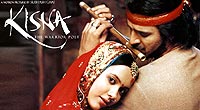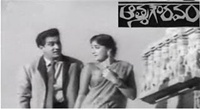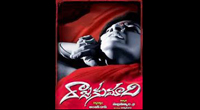This article needs additional citations for verification. (April 2016) (Learn how and when to remove this template message) |
The president is a common title for the head of state in most republics. In politics, president is a title given to leaders of republican states.
The functions exercised by a president vary according to the form of government. In parliamentary republics, they are limited to those of the head of state, and are thus largely ceremonial. In presidential and semi-presidential republics, the role of the president is more prominent, encompassing also (in most cases) the functions of the head of government. In authoritarian regimes, a dictator or leader of a one-party state may also be called a president.
Contents
Description
The title president is derived from the Latin prae- "before" + sedere "to sit." As such, it originally designated the officer who presides over or "sits before" a gathering and ensures that debate is conducted according to the rules of order (see also chairman and speaker), but today it most commonly refers to an executive official in any social organization. Early examples are from the universities of Oxford and Cambridge (from 1464) and the founding President of the Royal Society William Brouncker in 1660. This usage survives today in the title of such offices as "President of the Board of Trade" and "Lord President of the Council" in the United Kingdom, as well as "President of the Senate" in the United States (one of the roles constitutionally assigned to the vice president). The officiating priest at certain Anglican religious services, too, is sometimes called the "president" in this sense. However, the most common modern usage is as the title of a head of state in a republic.
In pre-revolutionary France, the president of a Parlement evolved into a powerful magistrate, a member of the so-called noblesse de robe ("nobility of the gown"), with considerable judicial as well as administrative authority. The name referred to his primary role of presiding over trials and other hearings. In the 17th and 18th centuries, seats in the Parlements, including presidencies, became effectively hereditary, since the holder of the office could ensure that it would pass to an heir by paying the crown a special tax known as the paulette. The post of "first president" (premier président), however, could only be held by the King's nominees. The Parlements were abolished by the French Revolution. In modern France the chief judge of a court is known as its president (président de la cour).
The first usage of the word president to denote the highest official in a government was during the Commonwealth of England. After the abolition of the monarchy the English Council of State, whose members were elected by the House of Commons, became the executive government of the Commonwealth. The Council of State was the successor of the Privy Council, which had previously been headed by the Lord President; its successor the Council of State was also headed by a Lord President, the first of which was John Bradshaw. However, the Lord President alone was not head of state, because that office was vested in the council as a whole.
The modern usage of the term president to designate a single person who is the head of state of a republic can be traced directly to the United States Constitution of 1787, which created the office of President of the United States. Previous American governments had included "presidents" (such as the president of the Continental Congress or the president of the Massachusetts Provincial Congress), but these were presiding officers in the older sense, with no executive authority. It has been suggested that the executive use of the term was borrowed from early American colleges and universities, which were usually headed by a president. British universities were headed by an official called the "Chancellor" (typically a ceremonial position) while the chief administrator held the title of "Vice-Chancellor". But America's first institutions of higher learning (such as Harvard University and Yale University) didn't resemble a full-sized university so much as one of its constituent colleges. A number of colleges at Cambridge University featured an official called the "president". The head, for instance, of Magdalene College, Cambridge was called the master and his second the president. The first president of Harvard, Henry Dunster, had been educated at Magdalene. Some have speculated that he borrowed the term out of a sense of humility, considering himself only a temporary place-holder. The presiding official of Yale College, originally a "rector" (after the usage of continental European universities), became "president" in 1745.
A common style of address for presidents, "Mr/Mrs. President," is borrowed from British Parliamentary tradition, in which the presiding Speaker of the House of Commons is referred to as "Mr/Mrs. Speaker." Coincidentally, this usage resembles the older French custom of referring to the president of a parlement as "Monsieur/Madame le Président", a form of address that in modern France applies to both the President of the Republic and to chief judges. Similarly, the Speaker of the House of Commons of Canada is addressed by francophone parliamentarians as "Monsieur/Madame le/la Président(e)". In Pierre Choderlos de Laclos's novel Les Liaisons Dangereuses of 1782, the character identified as Madame la Présidente de Tourvel ("Madam President of Tourvel") is the wife of a magistrate in a parlement. The fictional name Tourvel refers not to the parlement in which the magistrate sits, but rather, in imitation of an aristocratic title, to his private estate.
Once the United States adopted the title of "president" for its republican head of state, many other nations followed suit. Haiti became the first presidential republic in Latin America when Henri Christophe assumed the title in 1807. Almost all of the American nations that became independent from Spain in the early 1810s and 1820s chose a US-style president as their chief executive. The first European president was the president of the Italian Republic of 1802, a client state of revolutionary France, in the person of Napoleon Bonaparte. The first African president was the President of Liberia (1848), while the first Asian president was the President of the Republic of China (1912).
In the twentieth and twenty-first centuries, the powers of presidencies have varied from country to country. The spectrum of power has included presidents-for-life and hereditary presidencies to ceremonial heads of state.
Presidents in the countries with a democratic or representative form of government are usually elected for a specified period of time and in some cases may be re-elected by the same process by which they are appointed, i.e. in many nations, periodic popular elections. The powers vested in such presidents vary considerably. Some presidencies, such as that of Ireland, are largely ceremonial, whereas other systems vest the president with substantive powers such as the appointment and dismissal of prime ministers or cabinets, the power to declare war, and powers of veto on legislation. In many nations the president is also the commander-in-chief of the nation's armed forces, though once again this can range from a ceremonial role to one with considerable authority.
Presidential systems
In almost all states with a presidential system of government, the president exercises the functions of head of state and head of government, i.e. the president directs the executive branch of government. When a President not only is head of state, but also head of government, is this, in Europe known to be a President of Counsel from the French Présidente du Conseil, used 1871-1940 and 1944-1958, as the Third and Fourth French Republics. In the United States the President has always been both Head of State and Head of Government and has always had the title of President.
Presidents in this system are either directly elected by popular vote or indirectly elected by an electoral college or some other democratically elected body.
In the United States, the President is indirectly elected by the Electoral College made up of electors chosen by voters in the presidential election. In most states of the United States, each elector is committed to voting for a specified candidate determined by the popular vote in each state, so that the people, in voting for each elector, are in effect voting for the candidate. However, for various reasons the numbers of electors in favour of each candidate are unlikely to be proportional to the popular vote. Thus, in five close United States elections (1824, 1876, 1888, 2000, and 2016), the candidate with the most popular votes still lost the election.
In Mexico, the president is directly elected for a six-year term by popular vote. The candidate who wins the most votes is elected president even without an absolute majority. The president may never get another term. The 2006 Mexican elections had a fierce competition, the electoral results showed a minimal difference between the two most voted candidates and such difference was just about the 0.58% of the total vote. The Federal Electoral Tribunal declared an elected president after a controversial post-electoral process.
In Brazil, the president is directly elected for a four-year term by popular vote. A candidate has to have more than 50% of the valid votes. If no candidates achieve a majority of the votes, there is a runoff election between the two candidates with most votes. Again, a candidate needs a majority of the vote to be elected. In Brazil, a president cannot be elected to more than two consecutive terms, but there is no limit on the number of terms a president can serve.
Many South American, Central American, African and some Asian nations follow the presidential model.
Semi-presidential systems
A second system is the semi-presidential system, also known as the French model. In this system, as in the parliamentary system, there are both a president and a prime minister; but unlike the parliamentary system, the president may have significant day-to-day power. For example, in France, when his party controls the majority of seats in the National Assembly, the president can operate closely with the parliament and prime minister, and work towards a common agenda. When the National Assembly is controlled by his opponents, however, the president can find himself marginalized with the opposition party prime minister exercising most of the power. Though the prime minister remains an appointee of the president, the president must obey the rules of parliament, and select a leader from the house's majority holding party. Thus, sometimes the president and prime minister can be allies, sometimes rivals; the latter situation is known in France as cohabitation. Variants of the French semi-presidential system, developed at the beginning of the Fifth Republic by Charles de Gaulle, are used in France, Portugal, Romania, Taiwan, Sri Lanka and several post-colonial countries which have emulated the French model. In Finland, although the 2000 constitution moved towards a ceremonial presidency, the system is still formally semi-presidential, with the President of Finland retaining e.g. foreign policy and appointment powers.
Parliamentary systems
The parliamentary republic, is a parliamentary system in which the presidency is largely ceremonial with either de facto or no significant executive authority (such as the President of Austria) or de jure no significant executive power (such as the President of Ireland), and the executive powers rests with the Prime Minister who automatically assumes the post as head of a majority party or coalition, but takes oath of office administered by the president. However, the president is head of the civil service, commander in chief of the armed forces and in some cases can dissolve parliament. Countries using this system include Austria, Albania, Bangladesh, Czech Republic, Germany, Greece, Hungary, Iceland, India, Ireland, Israel, Italy, Malta, Pakistan, Singapore.
A variation of the parliamentary republic is a system with an executive president in which the president is the head of state and the government but unlike a presidential system, is elected by and accountable to a parliament, and referred to as president. Countries using this system include Botswana, South Africa and Suriname.
Collective presidency

Request Movie Now
Watch movie President online on Amazon
Watch movie President online
Watch The Movie On PrimeBewafa Sanam Full HD Movie Download

Aitbaar (1985) Full HD Movie Download
.jpg)
Sherni Full HD Movie Download

Kisna Full HD Movie Download

Jis Desh Mein Ganga Rehta Hai Full HD Movie Download

Roja Full HD Movie Download

Aankhen (1993) Full HD Movie Download
.jpg)
Yalgaar Full HD Movie Download

Farz Aur Kanoon (1982) Full HD Movie Download
.jpg)
Cheetah-The Leopard Full HD Movie Download

Jabilamma Pelli Full HD Movie Download

Adavi Manushulu Full HD Movie Download

Chakkani Chukka Full HD Movie Download

Aatma Gowaravam Full HD Movie Download

Troy Full HD Movie Download

Keelu Gurram Full HD Movie Download

Love Game Full HD Movie Download

Rajakumari Full HD Movie Download

Ontari Poratam Full HD Movie Download

Lafangey Parindey Full HD Movie Download

Sins-English Full HD Movie Download

Download latest Movie from bollywood
- 1> baaghi 3
- 2> THE SKY IS PINK MOVIE FULL STORY AND REVIEW
- 3> Luka Chuppi
- 4> TO ALL THE BOYS I’VE LOVED BEFORE
- 5> Kabir Singh
- 6> Street Dancer 3D
- 7> Simmba
- 8> Gone Girl
- 9> The Girl Who Lived
- 10> Ludo
- 11> DILWALE DULHANIA LE JAYENGE
- 12> GUILTY
- 13> The Godfather
- 14> Adventures of Rusty
- 15> Sooryavanshi
- 16> Satyameva Jayate 2
- 17> Thappad
- 18> Bhool Bhulaiyaa 2
- 19> KGFChapter 2
- 20> Mardaani 2
- 21> Pinjar
- 22> Shivaji maharaj
- 23> Ek Villian 2
- 24> Hungama 2
- 25> Divergent
- 26> Mumbai Saga
- 27> The Internship
- 28> HIT (telugu)
- 29> Panga
- 30> The perfect date
- 31> 16 December
- 32> Gopala Gopala (Telugu)
- 33> Brahmastra
- 34> Gangubai Kathiawadi
- 35> Manmadhudu
- 36> Nenu local
- 37> Mahanati
- 38> Shatamanam bavathi
- 39> Lagaan
- 40> After
- 41> MOM
- 42> Shamshera
- 43> Raguvaran BTech
- 44> Khakee
- 45> The villain
- 46> OM
- 47> Mr. perfect
- 48> Bueatifull mind
- 49> Hichki
- 50> Gabbar Singh
- 51> Jogi
- 52> Before Sunrise
- 53> Before Sunset
- 54> Before Midnight
- 55> The Big Bull
- 56> Top Gun: Maverick
- 57> The Purge
- 58> The Sky is Pink
- 59> Laxmmi Bomb
- 60> Sadak 2
- 61> Sufna
- 62> Prithviraj
- 63> PK
- 64> Coolie No 1(2020)
- 65> Black Widow
- 66> Dear Zindagi
- 67> Dil Bechara
- 68> PHIR HERA PHERI
- 69> WAR
- 70> Dostana
- 71> RRR: Roudram Ranam Rudhiram
- 72> Maidan
- 73> Dabbang 3
- 74> Chhalaang
- 75> life as we know it
- 76> SherShaah
- 77> Sandeep Aur Pinky Faraar
- 78> Event Horizon
- 79> 83
- 80> Radhe: Your Most Wanted Bhai
- 81> Gunjan Saxena: The Kargil Girl
- 82> Mr India
- 83> Vivah
- 84> Anokha Bandhan
- 85> Ghost
- 86> Bhoot: Part One - The Haunted Ship
- 87> Haseen Dilruba
- 88> Laal Singh Chaddha
- 89> Qismat
- 90> Rajput
- 91> Drive
- 92> Dil Chahta Hai
- 93> Dil Ki Baazi
- 94> Dil Ka Rishta
- 95> Teesri Manzil
- 96> Dil
- 97> Love Aaj Kal
- 98> Khaali Peeli
- 99> Bunty Aur Babli 2
- 100> Atrangi Re
- 101> Gulabo Sitabo
- 102> Jodi
- 103> Suraj Pe Mangal Bhari
- 104> Deewana
- 105> Attack
- 106> Sardar Udham Singh
- 107> Toofan
- 108> THE LOVEBIRDS
- 109> Jersey
- 110> Ginny Weds Sunny
- 111> Thalaivi
- 112> Shiddat
- 113> Angels vs Zombies
- 114> Koi Mil Gya
- 115> Thank God
- 116> Bhuj: The Pride of India
- 117> Hum Aapke Hain Kaun
- 118> The Platform
- 119> Bird Box
- 120> Roohi Afzana
- 121> Torbaaz
- 122> Nikamma
- 123> World War Z
- 124> Extraction
- 125> Train to Busan
- 126> Life of Pi
- 127> SHAADI MEIN JROOR AANA
- 128> Himmat Aur Mehnat
- 129> To All The Boys: P.S. I Still Love You
- 130> Mimi
- 131> Good Newwz
- 132> Shubh Mangal Zyada Saavdhan
- 133> Raabta
- 134> Harry Potter and the Philosopher's Stone
- 135> Harry Potter and the Chamber of Secrets
- 136> Chhapaak
- 137> War of the Worlds
- 138> Harry Potter and the Prisoner of Azkaban
- 139> Harry Potter and the Goblet of Fire
- 140> MURDER MYSTERY
- 141> Shakuntala Devi
- 142> Bachchan Pandey
- 143> Jayeshbhai Jordar
- 144> Sheer Qorma
- 145> Saina
- 146> 'O' Pushpa I hate tears
- 147> Kedarnath
- 148> MS Dhoni The Untold Story
- 149> Chhichhore
- 150> Badhaai Ho
- 151> Unstoppable
- 152> Oz the Great And Powerful
- 153> The Girl on the Train
- 154> Haathi Mere Saathi 2020
- 155> The Conjuring: The Devil Made Me Do It
- 156> Gandhi Se Pehle Gandhi
- 157> The Song of Scorpions
- 158> Srimanthudu
- 159> Hello Guru Prema Kosame
- 160> Beauty and The Beast
- 161> Black Panther
- 162> Charlie and the Chocolate Factory
- 163> Bole Chudiyan
- 164> Fidaa
- 165> Duvvada Jagannadham
- 166> Bruce Lee: The Fighter
- 167> Hyper
- 168> Yaara
- 169> Red (2020)
- 170> Shivam
- 171> That Is Mahalakshmi
- 172> Nishabdham
- 173> Aashram 2020 web series
- 174> Laxmii
- 175> Mismatched
- 176> STUDENT OF THE YEAR 2
- 177> NAIL POLISH
- 178> Ramprasad Ki Tehrvi
- 179> KAAGAZ
- 180> 12 o Clock
- 181> The Power
- 182> bolo hau
- 183> Tribhanga
- 184> JAMUN
- 185> Madam Chief Minister
- 186> Maasaab
- 187> Aadhaar
- 188> Tanhaji
- 189> Bhaagi 3
- 190> Bhootnath
- 191> MALANG
- 192> Jai Mummy Di
- 193> Haathi Mere Saathi 2021
- 194> Shakeela
- 195> Unpaused
- 196> Annayya
- 197> Vamsoddharakudu
- 198> Mrugaraju
- 199> Narasimha Naidu
- 200> Sankranti
- 201> Manasu Maata Vinadhu
- 202> Anjaane
- 203> Apaharan
- 204> Bachke Rehna Re Baba
- 205> Bewafaa
- 206> Roohi
- 207> Radhe
- 208> Zindagi Khoobsoorat Hai
- 209> Yeh Mohabbat Hai
- 210> Yeh Kya Ho Raha Hai?
- 211> The Tomorrow War
- 212> DehradunDiary
- 213> Meri Shaadi Karaoo
- 214> Matruu Ki Bijlee Ka Mandola
- 215> No One Killed Jesica
- 216> Aag Ka Goola
- 217> Eight Million Dollars
- 218> Three Hundred
- 219> Cats and Dog
- 220> Decoy
- 221> Gold Rush
- 222> You Have Got Mail
- 223> Final Destination three
- 224> Tofan
- 225> Jungle
Request for Download movie President
- Bollywood movies
- Latest Bollywood movies
- Download all bengali movies
- Download all bhojpuri movies
- Download all english movies
- Download all gujarati movies
- Download all hindi movies
- Download all kannada movies
- Download all malayalam movies
- Download all marathi movies
- Download all oriya movies
- Download all punjabi movies
- Download all tamil movies
- Download all telugu movies
- Bollywood action movies
- Bollywood adventure movies
- Bollywood animation movies
- Bollywood classical movies
- Bollywood comedy movies
- Bollywood crime movies
- Bollywood devotional movies
- Bollywood documentary movies
- Bollywood drama movies
- Bollywood family movies
- Bollywood fantasy movies
- Bollywood historical movies
- Bollywood history movies
- Bollywood horror movies
- Bollywood musical movies
- Bollywood mystery movies
- Bollywood mythological movies
- Bollywood patriotic movies
- Bollywood romance movies
- Bollywood romantic movies
- Bollywood sci-fi movies
- Bollywood social movies
- Bollywood spiritual movies
- Bollywood sports movies
- Bollywood suspense movies
- Bollywood thriller movies
- Bollywood war movies
- Hot actress list
- Hot gujarati actress list
- Hot tamil actress list
- Hot bhojpuri actress list
- Hot assam actress list
- Hot bihari actress list
- Hot jammu and kashmir actress list
- Hot gujarati actress list
- Hot haryana actress list
- Hot konkani actress list
- Hot marathi actress list
- Hot odia actress list
- Hot punjabi actress list
- Hot rajasthani actress list
- Hot kannada actress list
- Hot malayalam actress list
- Hot telugu actress list
- Hot tulu actress list
- Hot Actress list from Indian city
- Hot actress list from ahmedabad
- Hot actress list from alappuzha
- Hot actress list from bangalore
- Hot actress list from bangalore
- Hot actress list from bhopal
- Hot actress list from chandigarh
- Hot actress list from chennai
- Hot actress list from guwahati
- Hot actress list from hyderabad, india
- Hot actress list from indore
- Hot actress list from jaipur
- Hot actress list from kannur
- Hot actress list from kochi
- Hot actress list from kolkata
- Hot actress list from kollam
- Hot actress list from kottayam
- Hot actress list from kozhikode
- Hot actress list from lucknow
- Hot actress list from madurai
- Hot actress list from mangalore
- Hot actress list from mumbai
- Hot actress list from mysore
- Hot actress list from new delhi
- Hot actress list from patna
- Hot actress list from pune
- Hot actress list from thiruvananthapuram
- Hot actress list from thrissur
- Hot actress list from tiruchirappalli
- Hot actress list from vijayawada
- Hot actress list from visakhapatnam
- All Bollywood Movies
- Bollywood Celeb
- >Art Director
- >Audiography
- >Background Music
- >Banner
- >Choreographer
- >Cinematographer
- >Costume Designer
- >Dialogue Writer
- >Director
- >Distributor
- >Editor
- >Executive Producer
- >Hair Stylist
- >Lyricist
- >Music Director
- >Photographer
- >Playback Singers
- >Presenter
- >Producer
- >Production Company
- >Production Designer
- >Screenplay
- >Singer
- >Sound
- >Actor
- >Story Writer
- >Studio
- >Video Director
- >Miscellaneous
- >Publicity (pro)
- >Web Creator
- >Production Labs
- >Publicity Design
- >Publicity Stills
- >Writer
- >Miscellaneous Artists
- >Visual Effects
- >Reporter
- >Music Company
- >Shooting Studios
- >Picturised On
- >Line Producer
- >Co Producer
- >Asst Director
- >Casting Director
- >Cinematography
- >Choreography
- >Dialouge
- >Editing
- >Lyrics
- >Music
- >Story
- >Playback Singer Female
- >Playback Singer Male
- >Actor In A Comic Role (male/female)
- >Child Artiste
- >Ensemble Cast
- >Actor Popular Choice (male)
- >Actor Popular Choice (female)
- >Sa Re Ga Ma Pa Song Of The Year
- >Actor In Supporting Role
- >Actress In Supporting Role
- >Actor In Leading Role
- >Art Direction
- >Actress In Leading Role
- >Sound Recording
- >Costume Design
- >Special Effects
- >Action
- >Actor In A Negative Role
- >Lifetime Achievement Award
- >Cinematic Exellence (director)
- >Cinematic Exellence (male)
- >Cinematic Exellence (female)
- >International Male Icon
- >International Female Icon
- >Actor In A Supporting Role (male)
- >Actor In A Supporting Role (female)
- >Actor In A Comic Role
- >Playback Singer (male)
- >Playback Singer (female)
- >Most Promising Debut (female)
- >Most Promising Debut (male)
- >Most Promising Director
- >Sound Design
- >Lifetime Jodi
- >Marketed Film
- >Jury Award For Best Actor
- >Jury Award For Best Actress
- >Jury Award For Best Film
- >Jury Award For Best Director
- >Playback Singer(male)
- >Lifetime Acheivement Award (male)
- >Excellence Award
- >Jodi Award
- >Performer Of The Year
- >Presented By

